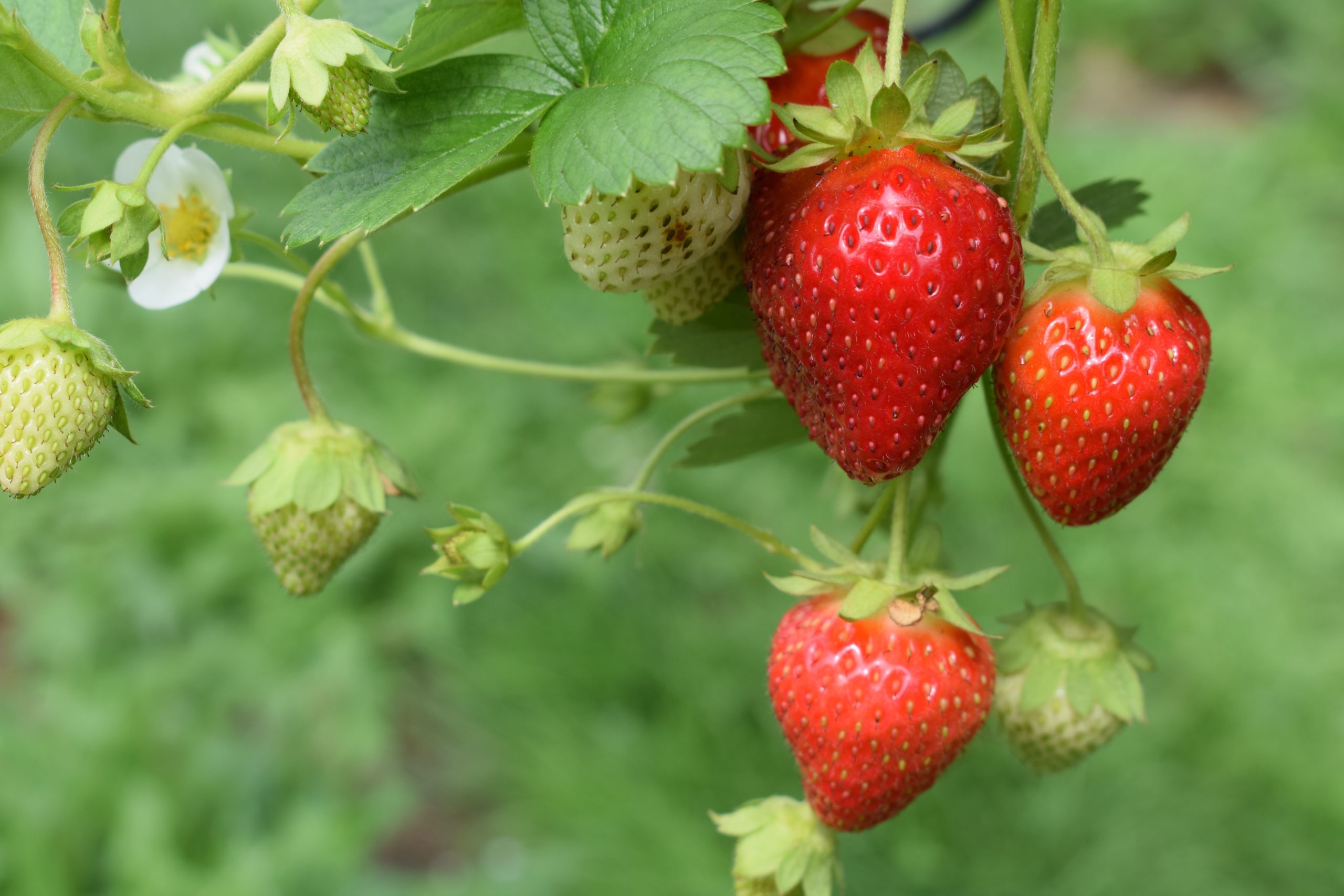The Best Strawberry Varieties for Home Gardens
For gardeners who want to grow their own juicy, sweet strawberries, choosing the right variety is key. With hundreds of types to select from, it can be tricky to decide which are the best strawberries for your home garden.
The ideal strawberry cultivar depends on your region’s climate, your desired harvest timeframe, growth habit preferences, and fruit qualities like flavor, size, and color Read on for tips on picking top strawberry varieties for backyard growing success
Climate and Regional Suitability
One of the most important factors in choosing strawberry varieties is selecting ones suited to your particular growing zone and climate. Strawberries thrive best in sunny, temperate regions with moderate humidity.
Certain varieties are bred to tolerate regional climate extremes like summer heat, winter cold, high humidity, coastal conditions, etc. Consult your local Cooperative Extension service for recommended varieties optimized for your area.
You can also reference regional variety recommendations from reputable gardening sources. For example, this guide covers suggested strawberry cultivars for each U.S. state based on university trials: Strawberry Varieties by State.
June-Bearing vs. Everbearing Habit
Another decision is whether you want traditional June-bearing or everbearing strawberries. June-bearers produce a heavy crop over 3-4 weeks in early summer. Everbearers bear light crops spring through fall.
June-bearing strawberries send out runners to propagate new plants after fruiting. Everbearing varieties continually produce runners and fruits simultaneously. So June-bearers give a concentrated harvest while everbearers provide a steady, smaller supply.
For canning, freezing, and preserving, June-bearers are often preferred. If you want fresh strawberries all season, everbearing types are ideal. Also consider day-neutral cultivars that fruit throughout the growing season without runners.
Fruit Qualities
Flavor is paramount for most home growers. Opt for strawberry varieties described as sweet, intense, aromatic, or delicious to get the best fruit flavor. Since taste is subjective, you may want to sample several types if possible.
Also evaluate the color, shape, texture, and size you prefer. Look for cultivars with high scores for overall fruit quality. Firm, evenly shaped berries that are neither too soft nor overly hard are best for fresh eating.
Disease Resistance
Choose disease-resistant strawberry varieties when possible. Common diseases like leaf spot, botrytis, verticillium wilt, and anthracnose can seriously impact yields. Disease-prone plants require intensive management.
Look for cultivars labeled as resistant (R) or highly resistant (HR) to key diseases prevalent in your area. Disease resistance is especially beneficial for new strawberry growers.
Popular Home Garden Strawberry Variety Options
Here are some top-rated strawberry varieties to consider for backyard growing:
-
Earliglow – High-yielding early season June-bearer. Sweet, aromatic berries. Hardy and disease resistant.
-
Jewel – Vigorous midseason June-bearer with large, firm, flavorful berries. Heat and disease tolerant.
-
Chandler – Extremely productive with large, aromatic, sweet berries. Widely adaptable June-bearer.
-
Seascape – Day-neutral type with excellent flavor and productivity. Grow in hanging baskets.
-
Albion – Sweet, fruity everbearer. Bears loads of berries from spring to fall. Great for small spaces.
-
Ozark Beauty – Reliable everbearing variety for long harvests. Produces extra-sweet berries.
-
Tribute – Day-neutral with superior flavor and disease resistance. Extended harvest period.
-
Allstar – High-yielding June-bearer with rich flavor. Adapts well to many climates.
-
Evie 2 – Day-neutral cultivar bred for hanging baskets and containers. Vigorous and high-yielding.
-
Sweet Charlie – Prolific everbearer with extra sweet, aromatic berries perfect for snacking.
The most flavorful homegrown strawberries come from selecting varieties ideally suited for your growing conditions. Consider climate, harvest season, growth habit, disease resistance, and fruit qualities when choosing plants. With the right strawberry cultivar, you’ll be rewarded with bumper crops of juicy, decadent berries all season long.
The best strawberry varieties to grow at home
Most fruit grows back every year, so you can enjoy (or not enjoy) the quality of the varieties you choose for many years to come. Flavour should be paramount, but also have an eye on when they produce. The fact that I don’t like to can much means that I choose a long season over a glut.
“Honeoye” is a great early-season variety that bears fruit until June. After that, “Cambridge Favourite” takes over for Wimbledon, and “Royal Sovereign,” an older variety, bears fruit from July to August.
Recommended videos for you
‘Mara des Bois’ comes next, giving me delicious berries from mid August into autumn. These are my non-negotiables; the rest come and go, as I try different varieties.

Some new favorites are “Just Add Cream” and “Marshmello,” a sweet and sour strawberry that is so delicate that you won’t find it in stores.
The second one is not only tasty and productive over a long season, but it also has beautiful pink flowers and a strong scent, which are also reasons to plant it. I suspect it may become a non-negotiable one, too.
I often grow new varieties in containers. Strawberry plants do really well in containers, and this way I can check out how good they are before committing them to my valuable garden space. Harvesting is easier, slug damage reduced and the plants and fruit are well exposed to sun and breeze.
The form of some varieties is especially suited to containers, with ‘Montana’ perhaps my favourite of these: it’s compact, has a great flavour, sends out a flurry of white flowers in spring and offers a long season of good-sized, sweet fruit.
Which Strawberry is the best? 12 Varieties in Quick Review
FAQ
What type of strawberry is the sweetest?
Which is better, everbearing or June bearing strawberries?
What strawberry plant produces the most fruit?
Are strawberries easy to grow?
They are resilient, adapted to many climates, and easy to care for. Strawberries are perfect fruit plants for any beginner gardener. They are adapted to a wide range of growing conditions and can be grown in containers, hanging baskets, garden beds, or even as edible landscaping.
Which strawberry plant is best for beginners?
Plugs are the most beginner-friendly because they are already rooted and leafed out. Crowns are more economical and affordable if you are growing larger amounts of strawberries. It is vital to the plant’s performance to plant it in the ground at just the right level.
Which strawberry varieties are best for container growing?
Everbearing strawberry varieties are a good choice for container growing; popular overbearing varieties are ‘Albion’, ‘Quinault’, and ‘Seascape.’ June-bearing strawberries are available in both early and late-season varieties; choose one best suited for your climate and planting schedule.
What are the best strawberry varieties?
Many gardeners consider Ozark Beauty to be the overall best of all everbearing strawberry varieties. Buy bare roots here. AC Wendy is an early season June-bearing variety that produces a very high yield of high-quality fruit. Like most June-bearing varieties, expect fruit in the second year.
How do I choose a strawberry plant?
By selecting strawberry plant varieties that produce during different parts of the season, you can prolong your harvest and enjoy fresh strawberries for an extended period of time. June bearing strawberries are most often of the Garden Strawberry variety (Fragaria x ananassa). June bearing strawberries are often planted using the matted row system.
Do strawberry plants grow better in different states?
Well, as one might expect, there are a lot of different climates and growing conditions out there. Each state has its own unique general soil composition, rainfall, and weather patterns. Consequently, any given strawberry plant variety is likely to do better in one specific region than other regions.
- The Ultimate Guide to Growing Strawberries in Raised Beds - August 8, 2025
- No-Dig Garden Beds: The Easiest Way to Grow a Beautiful Garden - August 6, 2025
- How to Protect and Preserve Wood for Raised Garden Beds - August 6, 2025

